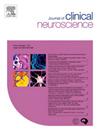减少脊髓硬膜外脓肿脊柱手术后手术结果的社会人口差异
IF 1.8
4区 医学
Q3 CLINICAL NEUROLOGY
引用次数: 0
摘要
背景调查人口统计学标识符(如种族和社会经济地位)对健康结果的影响,已经上升到跨医学学科研究的前沿,试图了解导致健康差异的因素之间复杂的相互作用。本研究旨在确定脊髓硬膜外脓肿(SEA)脊柱手术后预后的种族差异。方法采用2011-2022年美国外科医师学会(ACS)国家手术质量改进计划(NSQIP)数据库,对接受脊髓硬膜外脓肿手术的成年患者进行回顾性队列研究。研究人群按种族和民族分为四组:非西班牙裔白人(NHW)、非西班牙裔黑人(NHB)、西班牙裔(HIS)和其他(OTH)。进行多变量logistic回归分析,以确定与延长住院时间(LOS)、不良事件(ae)、非常规出院(NRD)、30天非计划再手术和死亡率相关的因素。结果1654例成人患者中,NHW 1198例(72.4%),NHB 184例(11.1%),HIS 188例(11.4%),OTH 84例(5.1%)。NHB组中mFI-5评分的个体比例最高。2 (NHW: 26.9%比花:39.1% vs西班牙:27.7%比其他:34.5%,p = 0.002)。两组间30天ae、LOS、手术时间、NRD、30天再手术率、死亡率均无显著差异。在单因素分析(OR: 1.80, CI: 1.10-2.93, p = 0.019)和多因素分析(aOR: 2.48, CI: 1.41-4.38, p = 0.002)中,OTH队列与延长住院的风险显著升高相关。队列与ae、NRD、30天再手术或死亡率之间没有其他显著关联。结论:我们的研究表明,SEA患者术后预后的种族差异有所减少。此外,合并症负担似乎与预后恶化有关。需要进一步的研究来证实我们的发现。本文章由计算机程序翻译,如有差异,请以英文原文为准。
Reduced sociodemographic disparities in surgical outcomes after spine surgery for spinal epidural abscess
Background
Investigation into the effect of demographic identifiers, such as race and socioeconomic status, on health outcomes has risen to the forefront of research across medical disciplines attempting to understand the complex interplay of factors that lead to health disparities. This study aims to identify racial disparities in outcomes following spine surgery for spinal epidural abscess (SEA).
Methods
We conducted a retrospective cohort study using the 2011–2022 American College of Surgeons (ACS) National Surgical Quality Improvement Program (NSQIP) database to identify adult patients who underwent spinal surgery for spinal epidural abscess. The study population was stratified by race and ethnicity into four groups: non-Hispanic White (NHW), non-Hispanic Black (NHB), Hispanic (HIS), and Other (OTH). Multivariable logistic regression analyses were performed to identify factors associated with extended length of stay (LOS), adverse events (AEs), non-routine discharge (NRD), 30-day unplanned reoperation, and mortality.
Results
Of the 1,654 adult patients, 1198 (72.4 %) identified as NHW, 184 (11.1 %) identified as NHB, 188 (11.4 %) identified as HIS, and 84 (5.1 %) identified as OTH. The NHB cohort had the highest proportion of individuals with mFI-5 scores > 2 (NHW: 26.9 % vs. NHB: 39.1 % vs. Hispanic: 27.7 % vs. Other: 34.5 %, p = 0.002). No significant difference in rates of 30-day AEs, LOS, operation time, NRD, 30-day reoperation, or mortality were noted between the groups. On both univariate (OR: 1.80, CI: 1.10–2.93, p = 0.019) and multivariate (aOR: 2.48, CI: 1.41–4.38, p = 0.002) analysis, the OTH cohort was associated with a significantly higher risk of extended hospitalization. There were no other significant associations between cohort and risk for AEs, NRD, 30-day reoperation, or mortality.
Conclusion
Our study suggests that there are reduced racial disparities in post-surgical outcomes for SEA patients. Additionally, the comorbidity burden seems to be associated with worsening outcomes. Further studies are necessary to corroborate our findings.
求助全文
通过发布文献求助,成功后即可免费获取论文全文。
去求助
来源期刊

Journal of Clinical Neuroscience
医学-临床神经学
CiteScore
4.50
自引率
0.00%
发文量
402
审稿时长
40 days
期刊介绍:
This International journal, Journal of Clinical Neuroscience, publishes articles on clinical neurosurgery and neurology and the related neurosciences such as neuro-pathology, neuro-radiology, neuro-ophthalmology and neuro-physiology.
The journal has a broad International perspective, and emphasises the advances occurring in Asia, the Pacific Rim region, Europe and North America. The Journal acts as a focus for publication of major clinical and laboratory research, as well as publishing solicited manuscripts on specific subjects from experts, case reports and other information of interest to clinicians working in the clinical neurosciences.
 求助内容:
求助内容: 应助结果提醒方式:
应助结果提醒方式:


